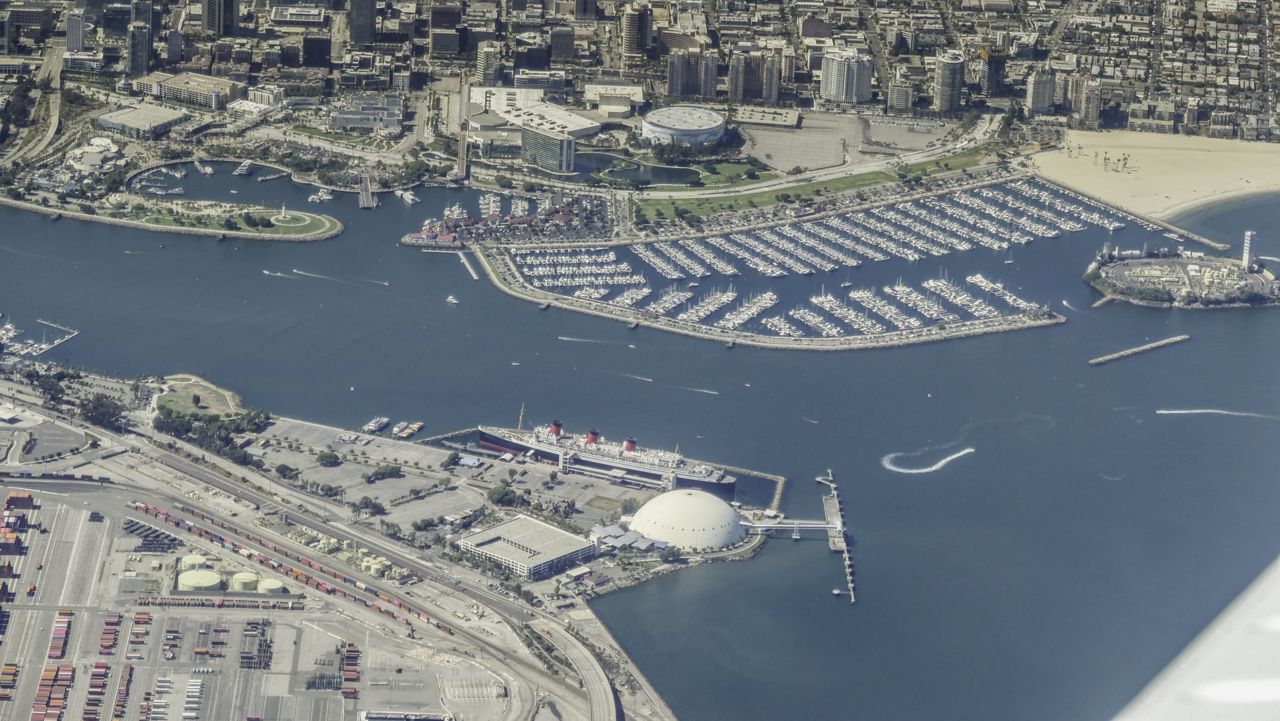LONG BEACH, Calif. — When SpaceX announced it would take up residence at the Port of Long Beach, it was another victory in a lengthening win streak.
In recent years, the city has drawn in businesses that have enjoyed a surge in the space launch market. Among them are Rocket Lab, Relativity Space and Virgin Galactic.
But not too long ago it saw its aerospace presence dip.
The city saw its boom around World War II as the oil industry there bloomed and a navy port became a chief source of jobs. And warplane manufacturing sprung up producing aircraft with names like “Flying Fortress” and “Havoc.”
In those days there was fierce competition for military plane contracts with multiple companies offering competitive bids. But as the years passed, companies consolidated in the aerospace and defense industry. And soon the final plane manufacturer in the city left. In 2015 Boeing’s last C-17 Globemaster III rolled off the assembly line, closing a once important part of the city’s economy and identity.
“Long Beach had a real dedicated and emotional attachment to this industry,” said Nick Schultz, executive director of Pacific Gateway Workforce. “The ecosystem in terms of big companies, known companies, the supply chains that served them.”
Much of that ecosystem never departed, allowing new businesses to slide into vacancies left by legacy companies or others caught in between the aerospace business of yesterday and that of today.
Cal State University, Long Beach, has long produced top engineers, the program offering students an annual opportunity to launch self-built rockets in the Mojave Desert.
The city built on its existing advantages with the help of a nearly $4 million economic stimulus grant from the U.S. Department of Defense.
It helped the city pay for planning and zoning to further entice fresh entrants to move in.
“We thought about other aerospace or aerospace related functions and how we might market the space to other areas of the country,” Schultz said. “It was almost like consulting work to really map some of the competencies these companies had.”
These new companies have emerged as the industry is in-flux. Space launches are no longer rare, but instead happen monthly with ambitious projects like Starlink, which aims to boost internet availability with a huge constellation of satellites.
The defense industry has transformed with the entrance of disruptors like SpaceX and advances satellite technology. The majority of satellites are no longer bus-sized as many can weigh a few hundred pounds. Some are even smaller. That means smaller, cheaper rockets are sufficient. That has helped aid the launch of more rockets into space, but companies are also gearing up for the future.
Rocket Lab, which recently announced an Initial Public Offering that valued it at about $4.1 billion, is among this group of competitors. At the core of this influx in money is commercial but also a growing interest from the military to have short-notice space launch capability.
Many cities around California have rich ground for aerospace development, but Long Beach has a unique combination of advantages. The city itself is experienced in the needs and requirements of aerospace business taking the lead on the complex and labor intensive task of properly zoning properties. Spaces like the 1.1 million square foot manufacturing facility of Boeing often need to accommodate manufacturing, testing and office space.
Technicians may need to fire up a rocket engine while accountants in a nearby building are crunching numbers.
Long Beach has also benefited from contributions of past companies. Boeing’s former campus offers infrastructure that companies would otherwise have to create themselves and the vacancy in the Port of Long Beach SpaceX took was once occupied by Sea Launch, a space delivery company that fired rockets off an oil rig.
Another key is labor, a facet of the ecosystem the city has worked hard to maintain through economic planning and nurturing the local community college and the nearby university.
“Companies moving in find the city available and willing to provide what they need, like a diverse and energetic talent pool,” said Jalal Torabzadeh, department chair of the Mechanical and Aerospace Engineering Department at CSU, Long Beach. “Another element has been the growth of the airport which has expanded and infrastructure development.”
The city’s future aerospace and defense industry could continue to grow as the satellite market expands. Whether it does will be decided by more than just what the city can offer.
A recent Morgan Stanley forecast suggests aerospace and defense could become a trillion-dollar industry by 2040, or nearly three times what it is today. If, or when, it grows, so could the benefits Long Beach reaps.



